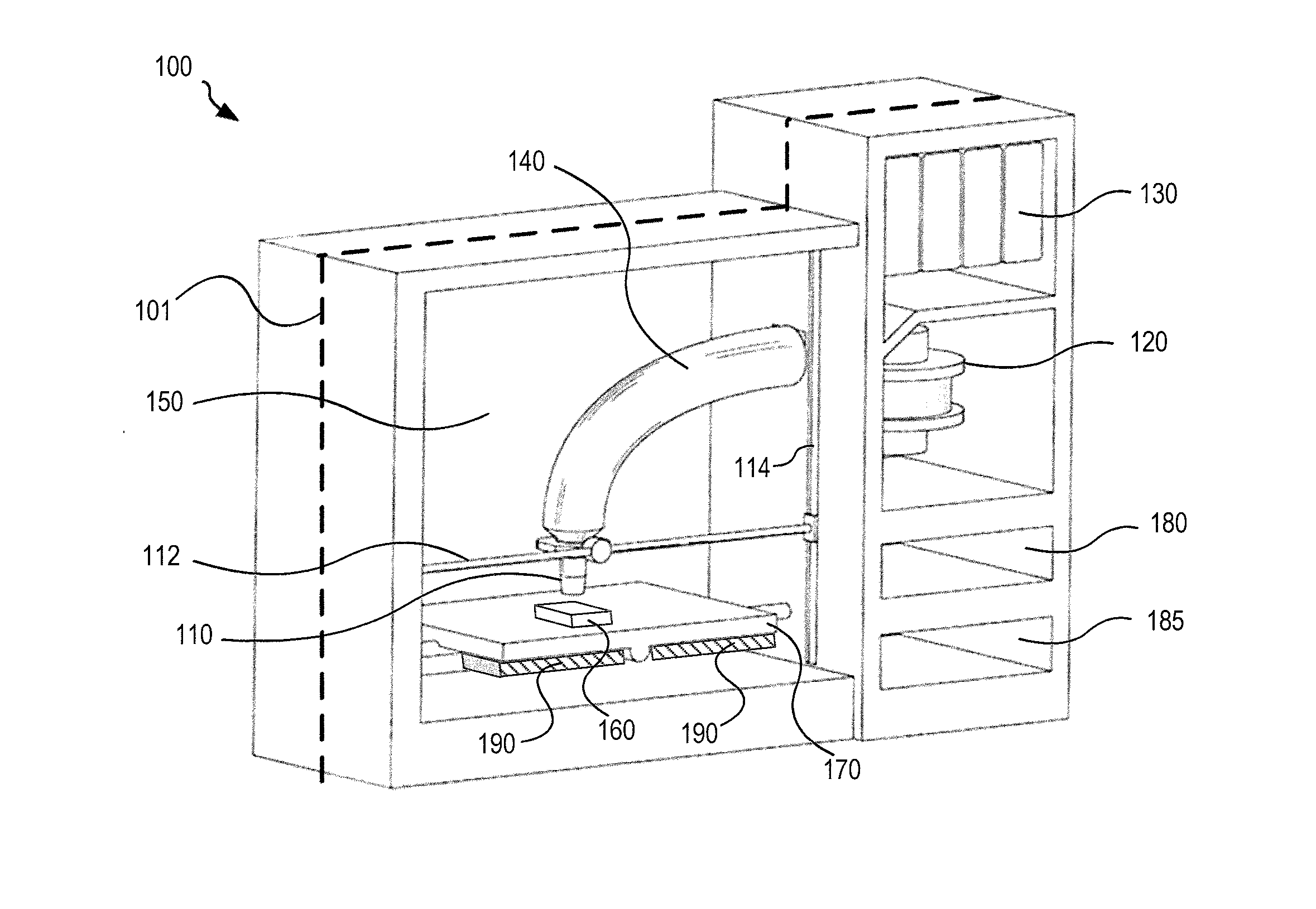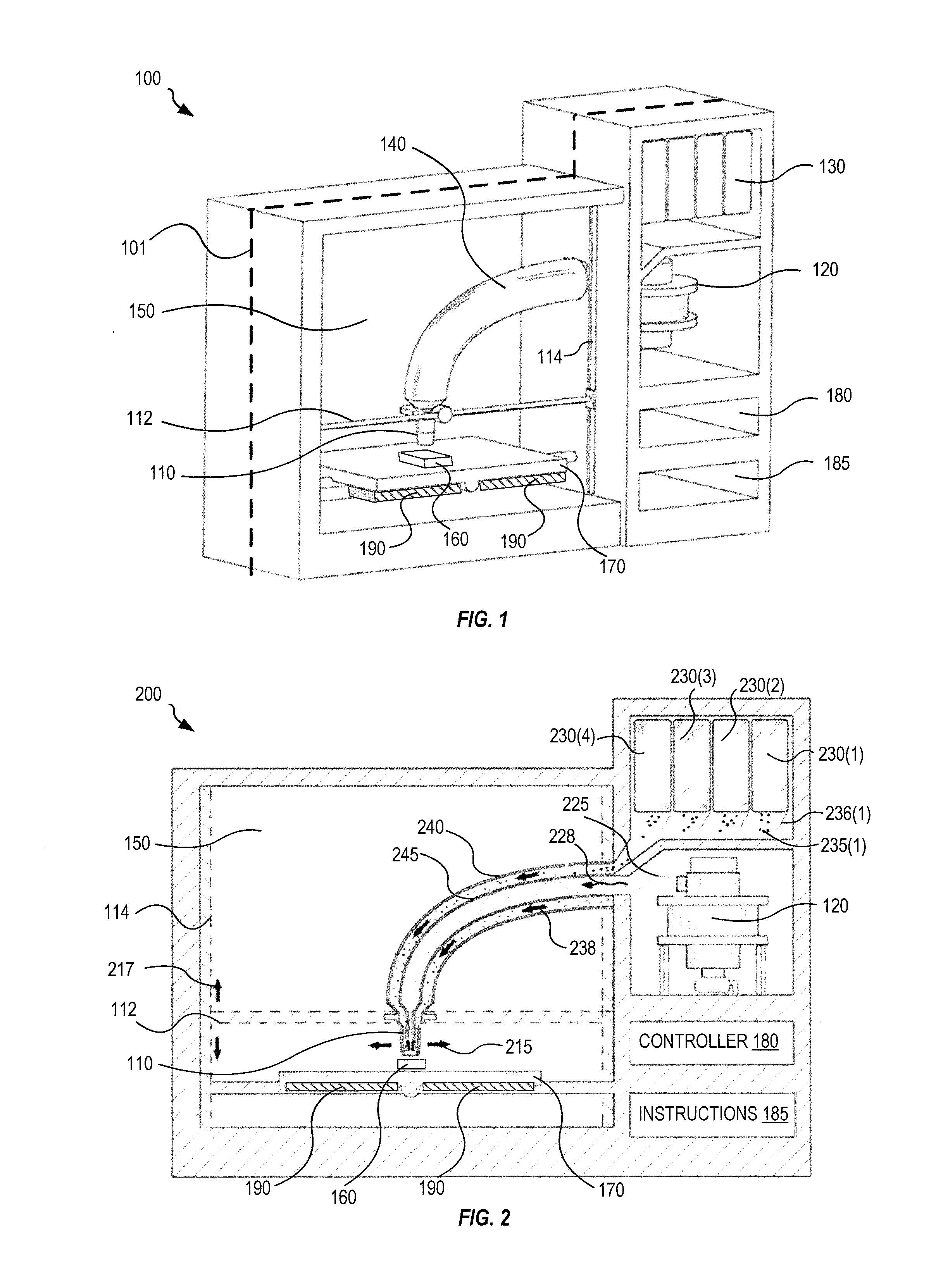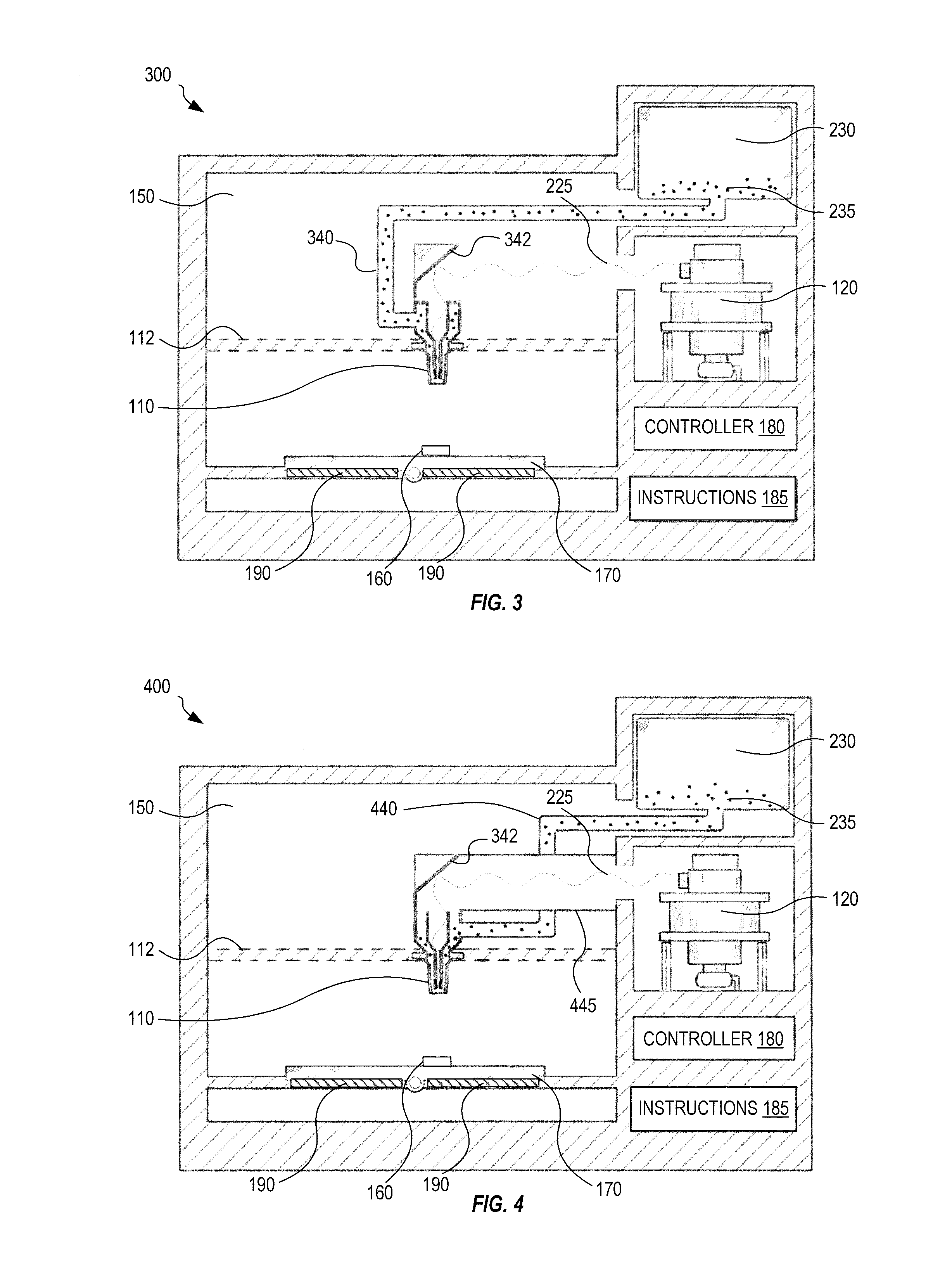Fused Material Deposition Microwave System And Method
a microwave system and microwave technology, applied in the direction of additive manufacturing processes, manufacturing tools, coatings, etc., can solve the problems of limiting the benefits of additive manufacturing, limiting and reducing the use of additive manufacturing methods
- Summary
- Abstract
- Description
- Claims
- Application Information
AI Technical Summary
Benefits of technology
Problems solved by technology
Method used
Image
Examples
Embodiment Construction
[0020]FIG. 1 shows one fused material deposition microwave system 100. System 100 includes a deposition nozzle 110 for depositing one or more materials, a microwave energy source 120 for providing microwave energy, and a material source 130 for supplying one or more materials. Examples of microwave energy source 120 include a gyrotron, klystron, magnetron, or other source of high-power microwave energy. Microwave energy source 120 is for example an integrated high-power microwave source that includes a compact power supply. Alternatively, microwave energy source 120 is modular, has an external power supply, and is coupled to a larger manufacturing apparatus. The modular embodiment is beneficial when system 100 is for example integrated into a CNC mill or a laser-based 3D printer. In an embodiment, the output power of microwave energy source 120 is adjusted by tuning current and voltage of an internal electron gun that directly affects electron current flowing inside a microwave cavi...
PUM
| Property | Measurement | Unit |
|---|---|---|
| wavelengths | aaaaa | aaaaa |
| frequencies | aaaaa | aaaaa |
| outlet diameter | aaaaa | aaaaa |
Abstract
Description
Claims
Application Information
 Login to View More
Login to View More - R&D
- Intellectual Property
- Life Sciences
- Materials
- Tech Scout
- Unparalleled Data Quality
- Higher Quality Content
- 60% Fewer Hallucinations
Browse by: Latest US Patents, China's latest patents, Technical Efficacy Thesaurus, Application Domain, Technology Topic, Popular Technical Reports.
© 2025 PatSnap. All rights reserved.Legal|Privacy policy|Modern Slavery Act Transparency Statement|Sitemap|About US| Contact US: help@patsnap.com



